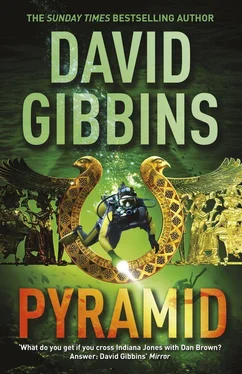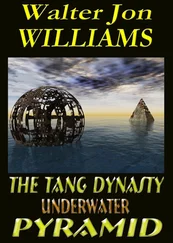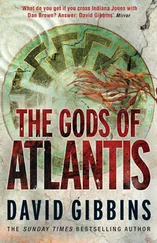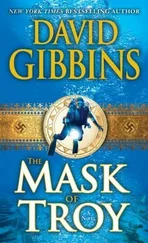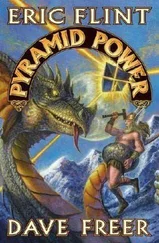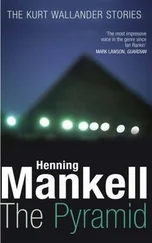The Lynx banked low, its rotor kicking up a halo of spray as it held position some five hundred meters off the ship’s port side, allowing Jack to see her more closely. Behind the accommodation block lay the helipad and the aft operations deck, the focus of most activity when they were working on a site. Jack cast a critical eye over the equipment visible in the stern. The main purpose of the refit had been to install an upgraded derrick for raising and lowering Zodiacs and submersibles, and he could see it extended over the starboard side, the cradle they had made for the sarcophagus sitting on the deck beside it. The derrick had passed its sea trials off Cornwall with flying colors, but it was having its first proper outing here. Jack remembered years before watching the Tudor warship Mary Rose being raised from the Solent, and the terrifying moment as the hull surfaced and the cradle slipped. That had also been in the glare of the world’s media, and he knew that Captain Macalister would be putting the derrick through every possible safety check to try to ensure that there was no brush with disaster this time around.
Jack watched a group of technicians in IMU overalls and safety helmets begin to release the derrick from its deck restraints and roll out the winch. IMU’s greatest assets were not equipment but personnel, and he knew he had the best. Over the years he had assembled a crack team, a mix of old friends and fresh talent, many of them bridging the divide between commercial and military experience and the strong focus on scholarship and research that drove all Jack’s projects forward. Unlike those of treasure hunters, their jobs were not on the line every time they embarked on a new quest, counting the cost hour by hour, holding out for prize money that rarely came. IMU operations were financed entirely from an endowment that released Jack from ever having to raise funds or satisfy investors. It had been a dream of his from the time when he ran student expeditions from a battered old van and an ex-navy inflatable, a dream realized when one of his most stalwart expedition divers, Efram Jacobovich, had ridden the wave of the software boom that was making huge fortunes when they had been students. Fifteen years later he backed Jack’s budding institute with an operating budget far larger than that of any other oceanographic institute in the world. Jack still had to answer to a board of directors. But with their criteria being scientific merit and feasibility rather than financial profit, he was in a unique position among undersea explorers able to mount multimillion-dollar projects. Above all, he was freed from ever having to consider selling artifacts; all their finds went on museum display or were part of the cycle of travelling exhibits that had brought their discoveries to audiences around the world. It was one commitment that Jack shared with Colonel Vyse, the British officer who had extracted the sarcophagus from the pyramid and dispatched it on its ill-fated voyage to the British Museum in 1838. Jack was determined that it should go to the best possible place for display as well as for its own security, and if that meant reneging on their offer to return it to Egypt, then so be it.
Beyond the rotor downdraft, the sea was millpond calm, and it took an effort to imagine the storm winds on that December day in 1838 and the abyss that lay beneath. Since their find of the chariots in the Red Sea, and touching the manuscript fragments from the Geniza in Cairo, biblical phrases had been running through Jack’s mind, snatches of verse he had remembered from chapel at boarding school. And darkness lay on the face of the deep . Far below them, unimaginably deep, in the place that creation had forgotten, lay the wreck of Beatrice , the ancient sarcophagus in its hull standing stark above the silt like the tomb of a long-forgotten sea god. That was temptation enough for any archaeologist, but it was not just the sarcophagus itself that had brought Jack back here. It was what Colonel Vyse had packed inside, a surprise for the museum, perhaps a sweetener to persuade the trustees to continue to sponsor his excavations. It was something that he himself had not recorded and was lost to history until that dive when Jack and Costas had brought it back to light.
When Jack had swept the silt from the plaque, he had been astonished to see the sun symbol of Akhenaten, a pharaoh who had lived over a thousand years after the mummy of Menkaure had been sealed within the sarcophagus. It was only after they had found a second Akhenaten plaque in the desert, one with a depiction showing the pyramids, that Jack had made sense of it, realizing that Akhenaten had taken over the pyramid as a portal into the underground complex beneath the Giza plateau that he and Costas had glimpsed for a few precious moments three months ago far below the burial chamber. Inside that chamber, perhaps mounted above the portal, Colonel Vyse had unwittingly found a clue to what might have been the most extraordinary discovery ever made in Egyptology. His decision not to mention the plaque and its loss in the wreck — perhaps to avoid criticism for not having recorded it — was to keep the world in ignorance until now. Jack had been clutching at straws since them, desperately hoping for clues to another entrance into the complex, a discovery he might make before Egypt shut down on him entirely. Coming back to the wreck was part of that trail. The plaque had been missing a section from one side, and he was hoping against hope that the lost fragment would be buried in the silt nearby.
The pilot’s voice came through his headphones. “Jack, we’re holding off for another fifteen minutes or so while a helo ahead of us delivers a film crew. As soon as they’ve cleared the helipad, we’re good to go.”
“Roger that, Charlie,” Jack replied. “I’ll use the time to get up to speed on the site. I don’t think I’m going to get much chance for that once I’m on board. And our colleague could always use a little more beauty sleep.”
“Roger that,” the pilot said. “I’ll advise you.”
A noise like a snorting water buffalo came through the intercom, and Jack pushed Costas up again and wedged him beside the window. He took out his iPad, attached the keyboard, propped it on his knees, and opened a ghostly image of the sarcophagus as he and Costas had first seen it from the submersible three months before. There was no indication that any other antiquities had been on board the ship, and the decision had been made not to excavate the site any further than was required to clear a large enough space to feed the cushioned winch cables beneath the sarcophagus preparatory to lifting it. He touched the screen and opened up the image that had brought them to this spot in the first place, a previously unknown watercolor that had appeared in an auction a few months earlier showing Beatrice in the harbor of Smyrna in Turkey. On the back had been a pencilled note made years later by the captain of the ship — George Wichelo, a man thought to have died in the wreck — giving its location in this bay a few nautical miles north of Valencia, resolving a mystery that had led undersea explorers on numerous false trails over the years in the hunt for the fabled lost sarcophagus.
The artist had accurately shown Beatrice as a brig, with foremast and mainmast and the boom for a spanker over the stern. Despite being on the cusp of the Victorian era, only a generation away from the transformation to steam power, Beatrice was indistinguishable in appearance from her forbears of the Napoleonic Wars period. She still bore the checkerboard “Nelson pattern” of gunports that merchantmen in the Mediterranean retained against Barbary pirates from North Africa, still a threat in the early 1830s when the painting had been made. He tapped the screen again and brought up a three-dimensional visualization of the wreck that Lanowski had completed a few days before, based on weeks of survey using a high-precision multibeam sonar array mounted on a remote-operated vehicle flown a few meters above the seabed.
Читать дальше
